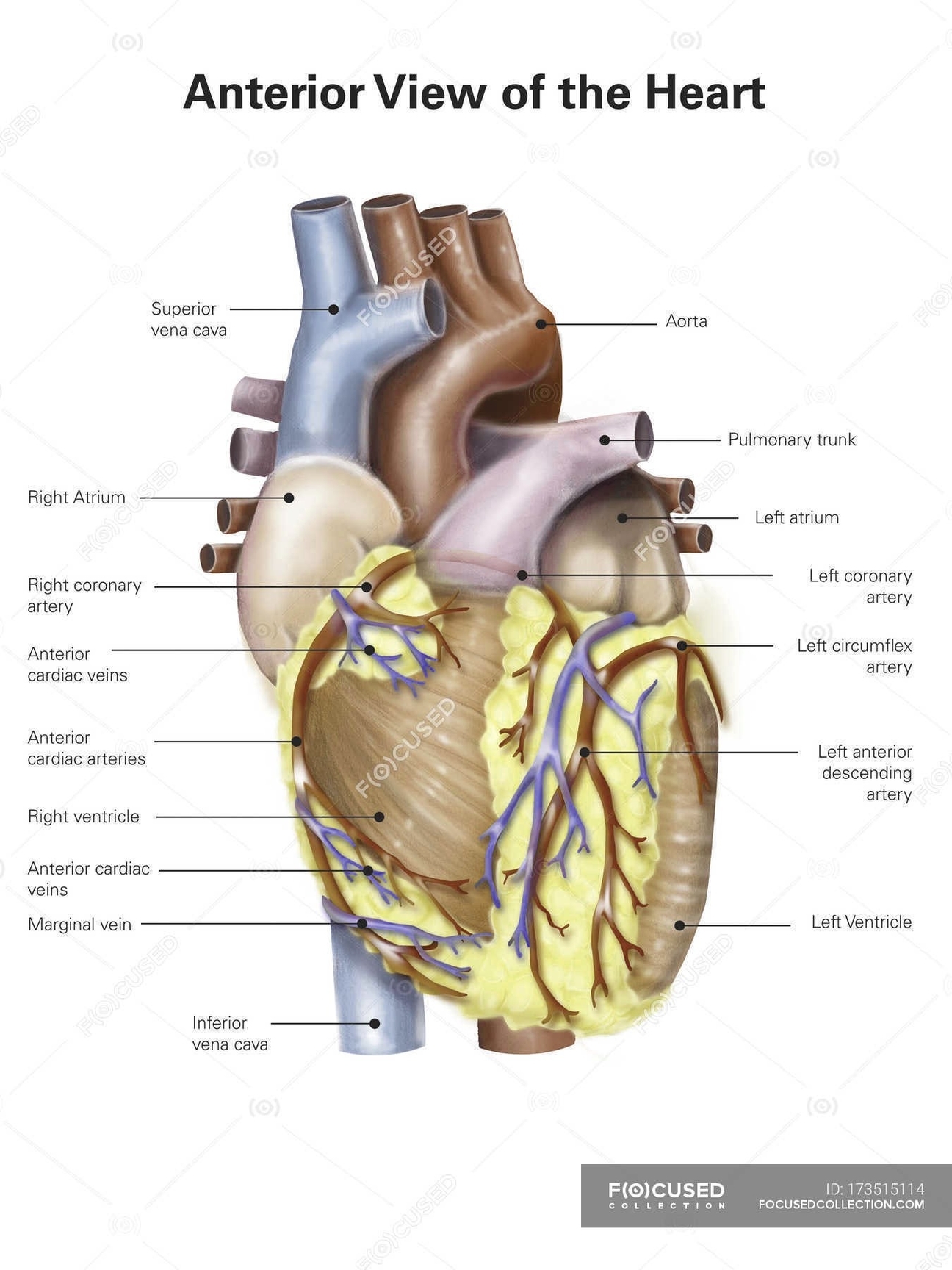Human Heart With Labels

The Human Heart
The human heart, a muscular organ roughly the size of a closed fist, is the epicenter of the circulatory system. It is located between the lungs, slightly to the left of center, behind the breastbone, and rests on the diaphragm.
tructure
The heart consists of several layers of a tough muscular wall, the myocardium. A thin layer of tissue, the pericardium, covers the outside, and another layer, the endocardium, lines the inside. The heart cavity is divided down the middle into a right and a left heart, which in turn are subdivided into two chambers. The upper chamber is called an atrium (or auricle), and the lower chamber is called a ventricle.
Function
The heart, although a single organ, can be considered as two pumps that propel blood through two different circuits. The right atrium receives venous blood from the head, chest, and arms via the large vein called the superior vena cava and receives blood from the abdomen, pelvic region, and legs via the inferior vena cava. Blood then passes through the tricuspid valve to the right ventricle, which propels it through the pulmonary artery to the lungs.
In humans, deoxygenated blood enters the heart through the right atrium from the superior and inferior venae cavae and passes to the right ventricle. From here, it is pumped into pulmonary circulation to the lungs, where it receives oxygen and gives off carbon dioxide. Oxygenated blood then returns to the left atrium, passes through the left ventricle and is pumped out through the aorta into systemic circulation.
Circulation
The heart powers the circulatory system, supplying the body with oxygen and other important nutrients needed to sustain life. The pumped blood carries oxygen and nutrients to the body, while carrying metabolic waste such as carbon dioxide to the lungs.
Heartbeat
The heart beats at a resting rate close to 72 beats per minute. The heart beats around 100,000 times a day, pumping approximately 8 pints of blood throughout the body 24/7. Exercise temporarily increases the rate, but lowers it in the long term, and is good for heart health.
Conclusion
The human heart, a marvel of biological engineering, is a testament to the intricate and efficient design of the human body. Its ceaseless work powers every function and process within our bodies, making it a symbol of life itself..
